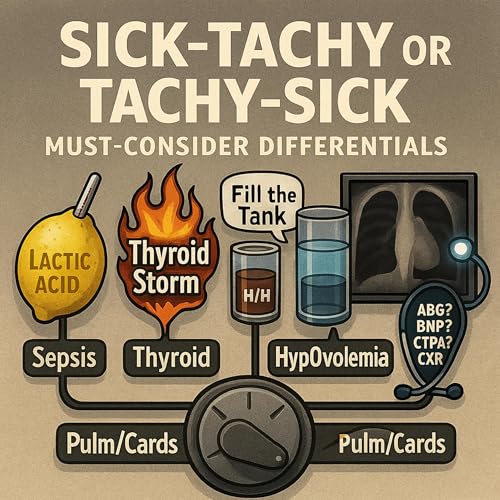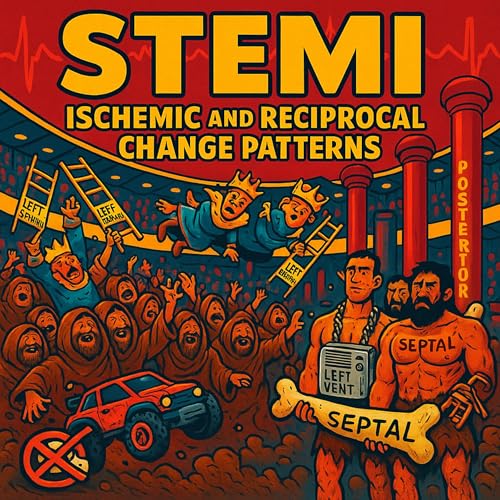Hemolytic Anemias Mnemonic for the ED: TAG MY SUITCASE
In this high‑impact episode of Emergency Medicine Mind Palace, we break down hemolytic anemias into a memorable 5‑suitcase system that will stick with you on your next shift.
If you’ve ever seen dark urine, anemia, or dropping hemoglobin and felt that twinge of uncertainty about which hemolytic process is at play, this episode will lock in the key visual cues and ED actions you need to recall under pressure.
We explore the TAG MY SUITCASE mnemonic, where each suitcase represents a dangerous hemolytic anemia type:
T → Thrombocytopenia suitcase (TTP / HUS / ITP / DIC / HELLP / HIT)
• VW slug bug sticker with TTP & HUS clues
• ITP “plate on the road” visual
• DIC, HELLP, and HIT taped reminders
• ED takeaway: These can kill fast—recognize the pentad, check for microangiopathic hemolysis, and know when to call heme & transfuse.
A → Autoimmune hemolysis suitcase (Warm & Cold)
• Warm side: Sun with spleen + IgG, holding butterfly (lupus) & RX bottle (drug‑induced)
• Cold side: Blue hand with IgM, complement‑mediated, “cold agglutinin” with a tiny microphone (think Mycoplasma)
• ED takeaway: Identify warm vs. cold; call heme; avoid cold exposure; supportive care first.
G → G6PD suitcase (G6 Police Department)
• Police badge, radical sticker with O₂ radicals attacking RBCs
• Fava beans & Heinz ketchup with a bitten lid (Heinz bodies, bite cells)
• ED takeaway: Stop the offending agent—the “police arrest the radicals.” Supportive transfusion only if unstable.
M → Mechanical / ECMO suitcase (Sales Rep)
• Heart valve + ECMO plush lung
• Cola urine bottle (hemoglobinuria) & cardiology business card
• ED takeaway: Shear stress causes hemolysis; check urine, hemolysis labs, MAP not pulse; coordinate with cardiology/CT surgery.
S → Sickle Cell suitcase (Crime Scene Outline)
• White briefcase with faint crescent RBC pattern
• The 4 R’s for ED management:
1. Recognize – Sickle crisis & life‑threatening complications
2. Reverse – Pain control, oxygen, fluids, antibiotics (Uno reverse card sticker)
3. Radiology – Targeted imaging: CT head, CXR→CT chest, CTA limb, priapism eval
4. Refer – Heme, Neuro, Vascular, Urology early
• X marks on chest, brain, leg, pelvis: Acute Chest, Stroke, Limb Ischemia, Priapism
⸻
By the end of this episode, you’ll be able to:
• Rapidly recognize which hemolytic anemia you’re facing
• Recall ED priorities and life‑saving interventions
• Use the TAG MY SUITCASE mnemonic to never miss a high‑risk patient
Key ED Reminder:
• Stabilize first, follow local protocols, and call for help early.
• When in doubt, think: Recognize → Reverse → Radiology → Refer.
🎧 Listen now and step into the Hemolytic Anemia Mind Palace—where visuals and memory hooks turn complex hematology into rapid recall.
 Sep 11 202540 m
Sep 11 202540 m 40 m
40 m 55 m
55 m 42 m
42 m Aug 26 20251 h y 6 m
Aug 26 20251 h y 6 m 51 m
51 m 22 m
22 m Aug 2 202520 m
Aug 2 202520 m
